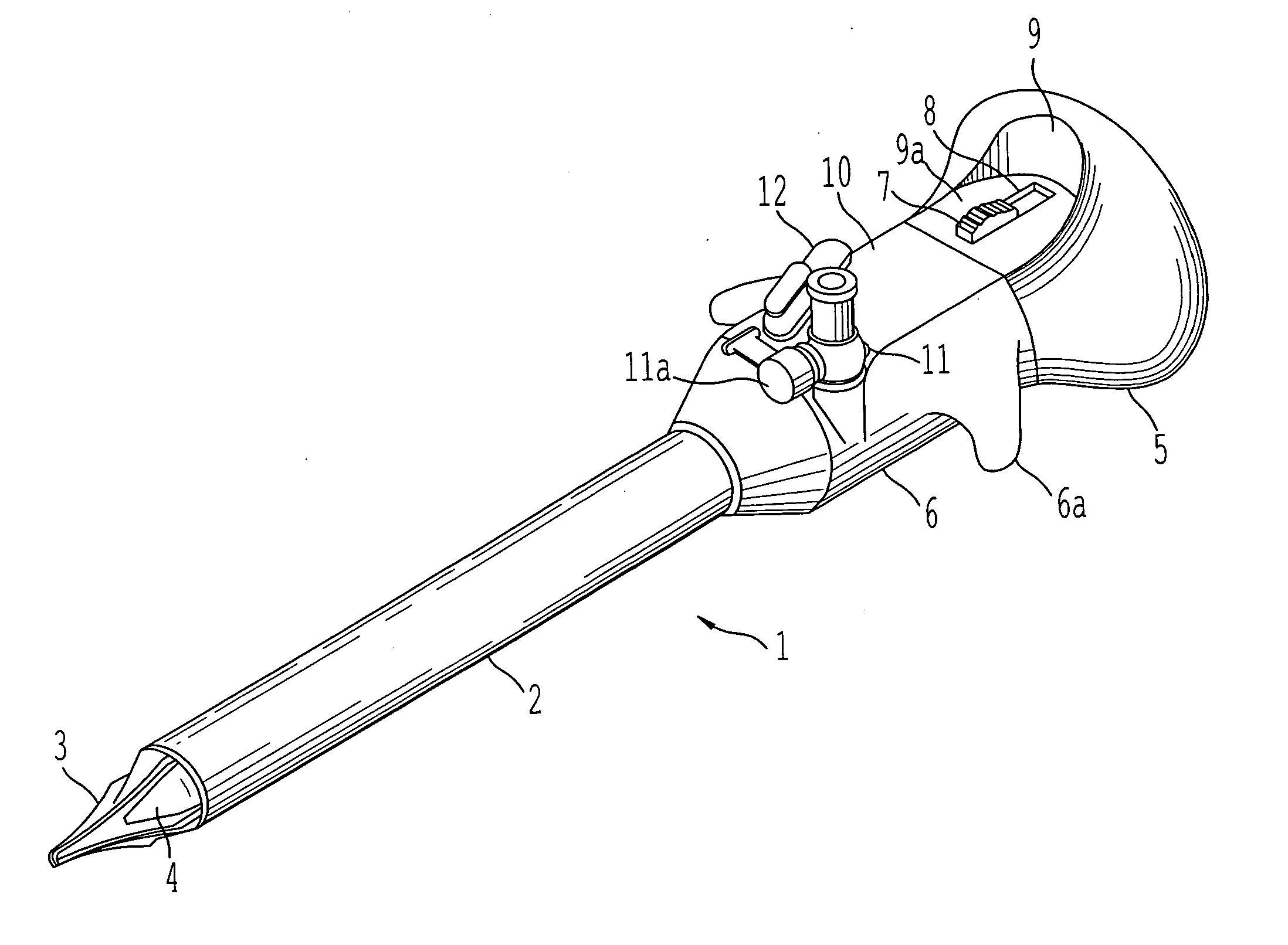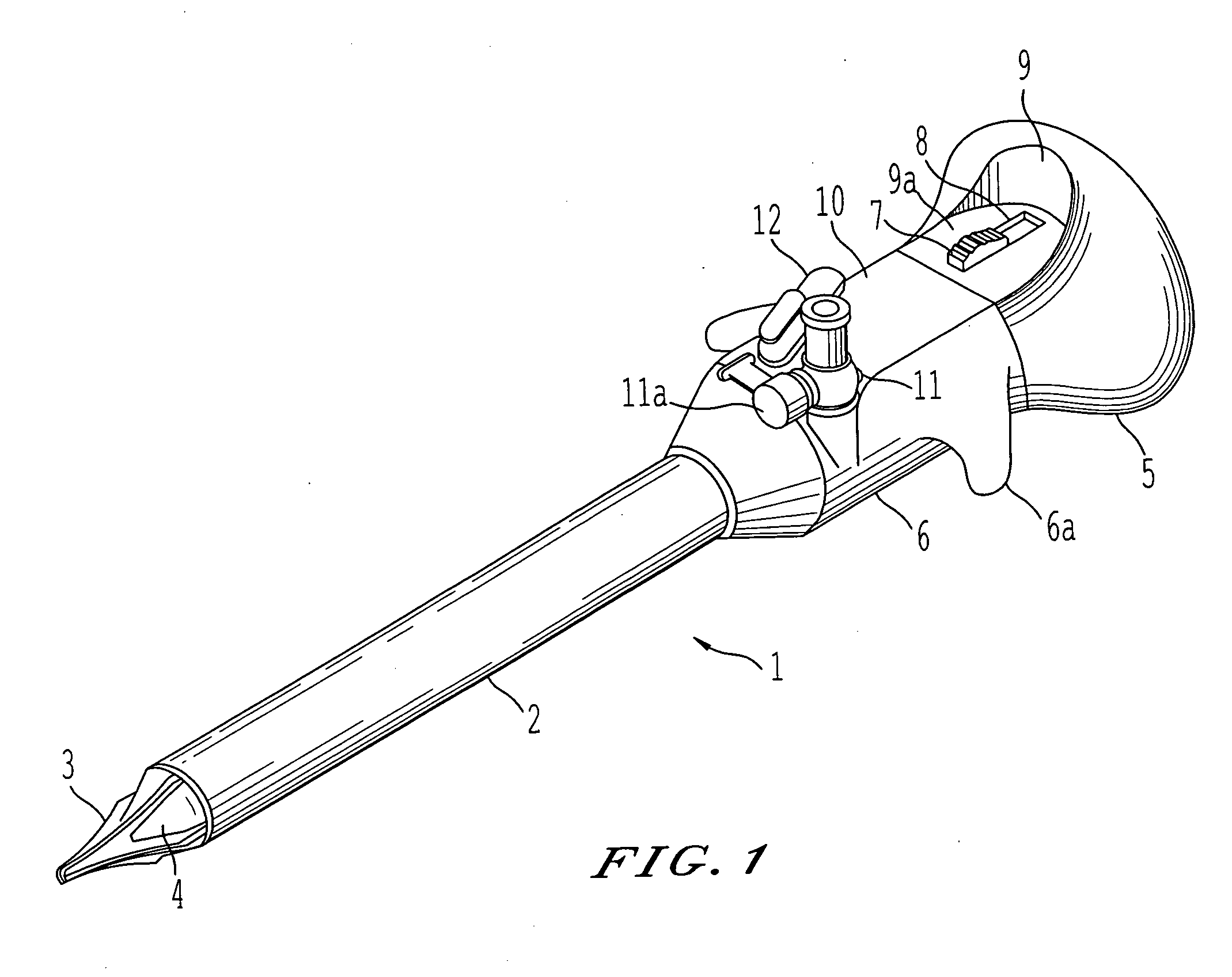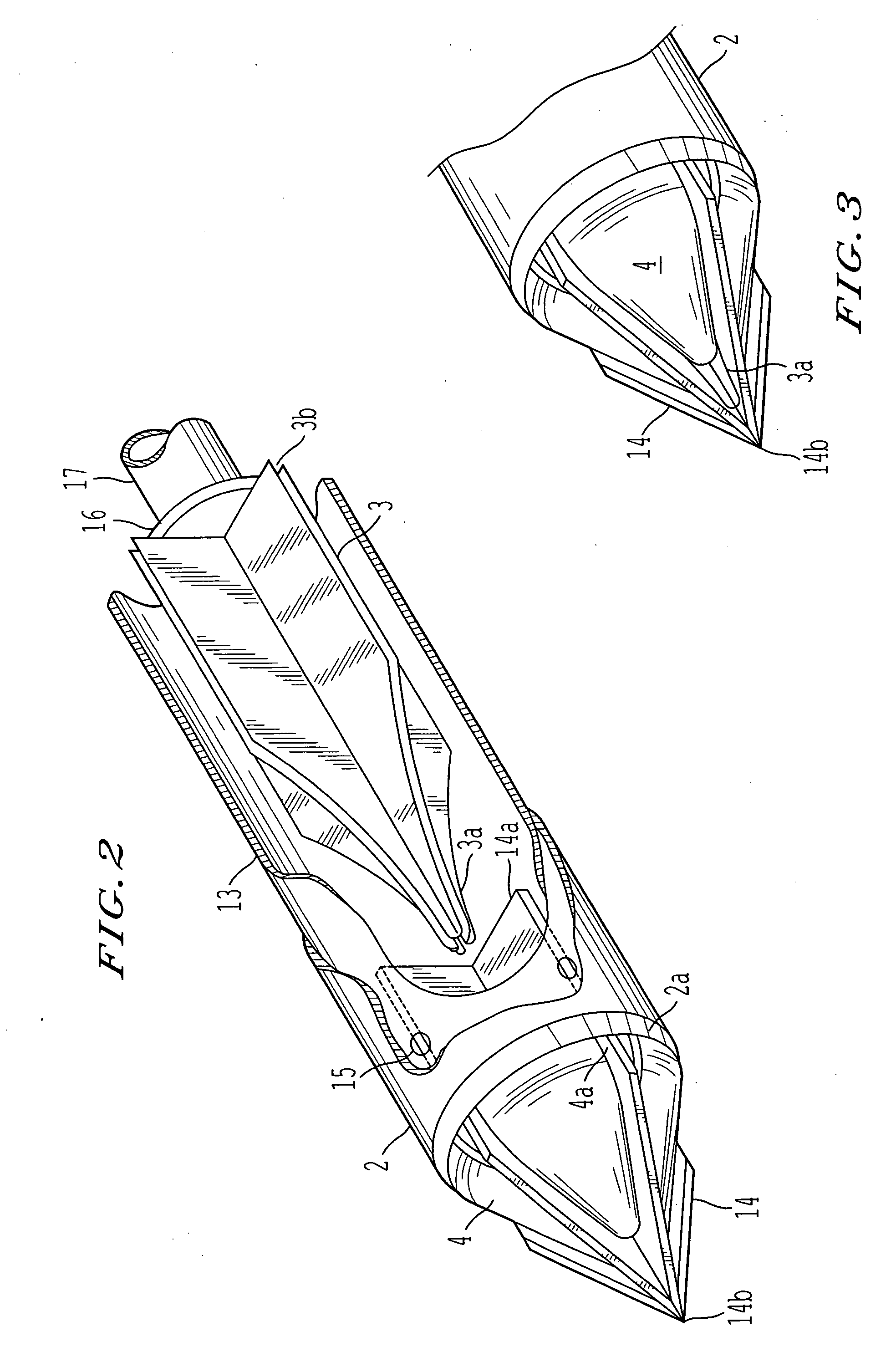Insufflator and method of use
a technology of insufflator and needle, which is applied in the field of insufflator and method of use, can solve the problems of inability to truly effective prevent internal organ injuries, dismal, and injuring internal organs
- Summary
- Abstract
- Description
- Claims
- Application Information
AI Technical Summary
Benefits of technology
Problems solved by technology
Method used
Image
Examples
third embodiment
[0088] FIG. 38 shows the distal end of the sleeve of the third embodiment, including the blade.
[0089] FIG. 39 discloses a top plan view of the distal end of the sleeve having a tapered flange.
[0090] FIG. 40 is a top plan view showing the guard when in position in the sleeve;
[0091] FIG. 41 shows a side view of an additional embodiment of the present invention; and
[0092] FIG. 42 shows a side view of the cannula and blade thereof.
[0093] In one embodiment, fluid is delivered into and through the device from an appropriate tubing or syringe via a Luer lock coupler 101 and is flow controlled with a simple stopcock mechanism 102, both items being common and well-known in the industry.
[0094] The outer body of the device is a hollow cylinder 104 (possibly made of surgical steel) and which is contemplated as being of a diameter of 1.0-4.0 mm in the preferred embodiment, to which is fixed a distal cutting blade 104a. Within the outer body cylinder resides a coaxial sliding spring-loaded cylind...
first embodiment
[0101] A further embodiment of the invention is designed to increase the dilating forces of the outer sleeve 204 by the addition of a larger surface area at the distal end 210c (FIG. 33). This larger surface area may be created by thickening the wall of the outer sleeve. The proximal extent of this thickened wall is denoted as 210f. Although the inner guard lumen is somewhat narrowed, it is still adequate for the passage of fluids 210e. The cutting edge 204a is of the same relative geometry to the sliding inner guard as the first embodiment, but the cutting blade, itself, may be made as a solid, flat piece of metal without an internal window 204b. The line denoted 210b (FIG. 39) shows the proximal extent of this cutting blade. The blade may be securely fixed the outer sleeve at the area denoted 210d.
second embodiment
[0102] The sliding inner guard of the second embodiment retains the same relative geometry to the cutting edge as described earlier in the invention. The most distal tip 212a of the guard may have a semi-conical shape, convex to the outside (FIG. 34). The guard tip 212a may also be of a more squared shape, depending on its application. The flow of fluid through the tip of the device is augmented by greatly enlarging the defect in the guard tip and reducing the support of the guard tip to two bilateral, parallel rails or posts. The ample communication between the inner guard lumen and large guard defects is demonstrated in the rotated axial side view of the sliding inner guard tip. The distal extent of the defect is denoted by the line 213a (FIG. 35).
[0103] A side axial view of the assembled an additional embodiment is shown (FIG. 34). When the guard is fully extended, it is apparent that there is ample space through the distal tip for the flow of fluid 212b, yet there is a large are...
PUM
 Login to View More
Login to View More Abstract
Description
Claims
Application Information
 Login to View More
Login to View More - R&D
- Intellectual Property
- Life Sciences
- Materials
- Tech Scout
- Unparalleled Data Quality
- Higher Quality Content
- 60% Fewer Hallucinations
Browse by: Latest US Patents, China's latest patents, Technical Efficacy Thesaurus, Application Domain, Technology Topic, Popular Technical Reports.
© 2025 PatSnap. All rights reserved.Legal|Privacy policy|Modern Slavery Act Transparency Statement|Sitemap|About US| Contact US: help@patsnap.com



